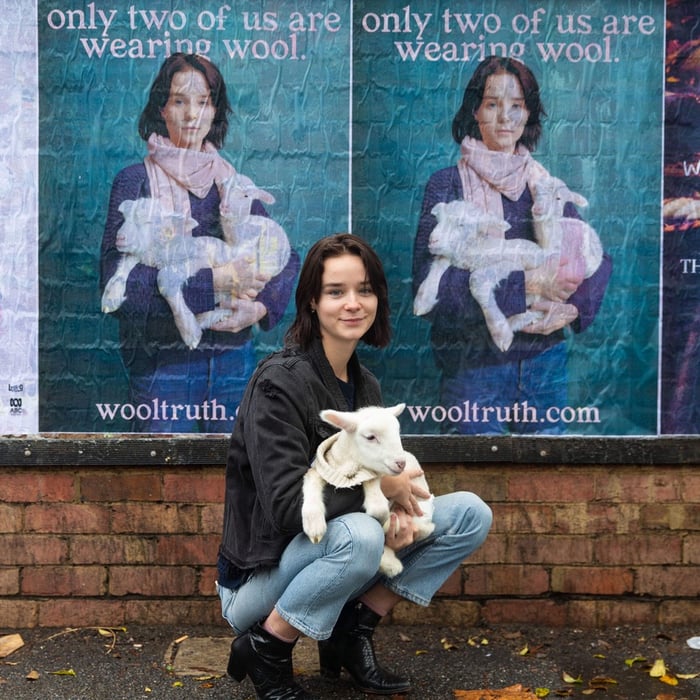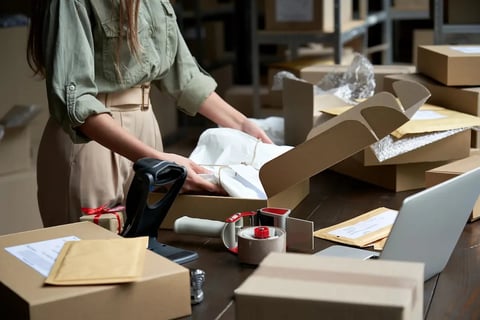
Ethical fashion champion and animal activist Emma Hakansson has been very hard at work over the last year and a half. The 21 year old model and author premieres a documentary that she has produced on 22 July. Called Willow and Claude, the short film tells the story of Australian-made, ethical and sustainable fashion.
As Emma gets ready to launch her film, we caught up with her to chat about her life and also this very important project.
Hi Emma, how did you first get into modeling?
I first began working as a model when I was in high school. I was interested in fashion and people had often commented that ‘I could be a model’, so I thought it would be a good way to get involved in the industry.
When did you first start paying attention to social issues around you? Was there a trigger?
I like to think that as a kid I was always concerned with what was right and fair. However, the first time I really became aware of a social justice issue in a way that demanded I change my actions, was when I decided to stop eating animals. I think that once you’ve properly opened your eyes to any one form of injustice, you’re more ready and willing to consider other issues — and so I did.
When did you become vegan and why?
I stopped eating land-dwelling animals when I was about 15. I was living in Sweden with my relatives. There, it’s very normal to eat moose and deer. I thought it was weird to eat those animals — they weren’t ‘food animals’. It was this discomfort that made me realize that ‘food animal’ is an arbitrary category, and that if I felt it was wrong to eat one animal, I shouldn’t eat any other. A year later, once I had learned more about wool, eggs, dairy and other ‘products’ derived from animals and their suffering, I became vegan.
Have you faced any negative industry response for your stance on ethical fashion?
I certainly have lost out on work opportunities as a model and creative director, but these were opportunities that wouldn’t have aligned with my values anyway. It was certainly harder at first to deal with this, but I’m very comfortable with it now.
I have been to some industry events, particularly those about sustainable materials and so on, where discussions have become interesting. Often wool industry representatives are given a lot of attention and praise for their ‘sustainable fibre’, but the data tells us that this is just inaccurate. I’m always professional, but I will address green-washing and ethics-washing when I see it.

What was the most shocking thing you discovered when you started investigating the, as you have called it, “dark side” of fashion?
There are countless dark parts to the fashion industry. If we’re speaking specifically about wool — which I focus on in my new film — I was most shocked to learn that the wool industry is a slaughter industry. I had known, though not to such a horrific extent, that sheep were violated and treated poorly in the industry, but I never realized lambs and sheep were being killed by the industry making my old sweaters. To learn more about this, check out these resources on my site.
When it comes to human rights issues that are particularly dark, I think it’s outrageous that 98% of garment workers who make our clothes are not paid a living wage that can allow them their most basic needs and rights. Here is a link to more information on garment worker wages.

Is it hard to shop ethically? What are barriers for entry for the average consumer?
It can be hard when you’re shopping new! Buying pre-loved and vintage is a much easier way to avoid so many ethical problems. Of course, sometimes we need new things.
The biggest barrier to ethical consumption, in my opinion, is green-washing and ethics-washing: brands using sweeping statements that sound like a lot but look like a little. People have a right to know what they are buying into, and for now this is very challenging.
A good way to navigate this is to ask the right questions. Some that I like to ask are:
- Is this garment free from any animal-derived materials?
- Are these materials sustainably sourced? How can you prove that?
- Did the person who made this earn a living wage? How can you demonstrate this?
- How much of your supply chain can you trace and detail, and can you point me to where I can see this?
What are some of your own favorite ethical brands?
I really love a very new brand called noSKIN, which uses sustainable, non-animal materials and ethical practices. They make recycled denim jeans (wearing as I write this), hemp jackets, vegan leather shoes, and more.
The first high-quality vegan bag I ever got was from the lovely people behind Sans Beast, who just this year released a collection using Desserto cactus leather.
My partner just got a pair of apple skin leather boots from Good Guys Don’t Wear Leather — a brand I have admired for a long time.
When did you start thinking about making Willow & Claude?
I made a campaign called Wool Truth for Animal Liberation Victoria which was released in mid-2019, and after that I realized I only wanted to delve into this issue more deeply. I first began researching the alternative material to showcase as a part of this project in the slightly later months of that year. So it’s a long time coming!
The first part of the film that was recorded was the vision from the cotton farm. This was in January 2020, and the film was only completed shortly before launch.
COVID-19 significantly slowed down the process, as we were in lockdown for the majority of 2020. We had to become very flexible!
Did the pandemic create obstacles for you and your team?
Definitely. The facility that was milling the cotton we needed to film was used for producing cotton to go inside face masks for some time, so the entire production of the knitwear and film stopped. We weren’t able to visit the farm twice as we had hoped, so we had to get creative with getting some additional shots. There were lots of complications, but the fact that the supply chain of the knitwear was 100% traceable and Australian actually made it fairly manageable, even if stressful.
And did the film evolve differently from what you first envisioned?
The purpose of the film was very clear from the beginning: explain the main issues tied to the wool industry, and show that there is a better way forward. We wanted to highlight plant-based fiber alternatives and show that you can still support local farmers and industry, without being cruel to animals or supporting an industry contributing significantly to the climate crisis.
Of course, the details of the film evolved, the script changed a bit, but the core has remained the same.
What’s a big misconception about the fashion industry that you want to correct?
There are many, but two misconceptions Collective Fashion Justice really wants to dismantle is that animal-derived materials can be sourced ethically, and in a way that is genuinely sustainable.
And what’s a big misconception about you?
Some people involved in the business of producing animal-derived materials certainly think I’m out to get them and want them to fail and suffer hardship. That’s not true. I want everyone in this sector to be able to have a just transition to more ethical and sustainable work. From animal to plant-based agriculture, from wool processing and leather tanning to other material production, and so on. It’s just the same as not wanting miners to suffer while recognizing that mining cannot continue in a sustainable and just future.
What’s next for Collective Fashion Justice? Any next projects lined up already?
Yes! We have a report on wool’s impact on biodiversity in collaboration with the Center for Biological Diversity coming out soon, via our CIRCUMFAUNA initiative.
We also have been involved in a big campaign addressing ethical issues inherent to another material. Lots coming that’s worth staying up to date with!
Is Collective Fashion Justice your primary focus right now? Or do you have other plans and ambitions?
Absolutely it is, but I’m always working on multiple things. I have two books out in the next two years, on the topic of veganism and social justice. I continue to work with ethical brands through Willow Creative Co to help them better compete with those less ethical. And I’m also getting more involved in issues around child protection, something close to my heart.
How can interested people watch the documentary?
The documentary is free to watch online at willowandclaude.com!
As supporters of sustainability and fans of activists everywhere, abillion is very proud to be a supporter of this project.








